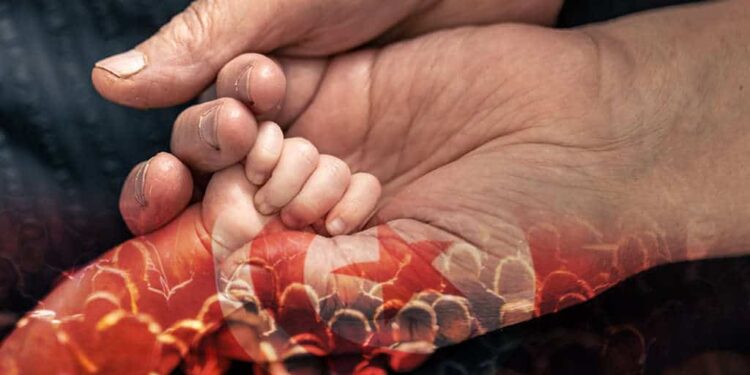Tunisia has entered a unprecedented demographic phase. According to the conclusions of the general population and housing census 2024, published by INS in 2025the country is experiencing a accelerated aging and a Historical drop in birth. Next to 17 % of the population is now over 60 years olda record, while weddings and births are in free fall. This deep mutation of Tunisian society poses a crucial question: how can the country absorb such a shock without weakening its socio-economic balance?
A modified age pyramid
The data from the National Institute of Statistics (INS) draw a Tunisia that changes its face at an unprecedented pace. The increase in the share of seniors is spectacular, going from 14 % ten years ago 17 % Today.
At the same time, the foundations of demographic renewal collapse:
- The number of newborns dropped by 8 % compared to the previous decade.
- The number of Annual weddings decreased by almost 12 %the average age at marriage progressing.
This reorganization is not uniform. She is exacerbated by theinner exodus which concentrates young people in big cities and leaves the regions of the interior in the face of even more marked aging. These figures translate a structural change well beyond the cyclical variations.
A political response to the urgency
Faced with the decline in births, the Tunisian government is actively seeking to reverse the trend. In June 2025, the Minister of Health, Mustapha Ferjaniinsisted on the urgency of establishing a ” national strategy ” clear. The objective is double: Relaxifying the birth rate And improve population growth indicators, considered vital for the country’s socio-economic balance.
This demographic drop already has concrete and immediate repercussions, especially on the health system. Mr. Ferjani warned on the viability of maternity services : to be effective and comply with scientific standards, a gynecology-obstetric service must register at least 300 births per year. With current hindsight, this minimum threshold may no longer be reached in several hospital structures, threatening the quality and continuity of care.
Read also: Tunisia: the government wants Tunisians to make babies
The company changing: when young people delay the home
The reasons for this demographic decline are intrinsically linked to the Modernization of Tunisian society and its economic difficulties.
- Economic obstacles: THE unemploymentthere precariousness and the explosion of Cost of housing brake the ability of young couples to consider the child.
- Socio -cultural factors: Emancipation of young women is a key factor. Better educated and more inserted in the labor market, they choose to delay marriage and maternityprioritizing their career and independence.
- Urbanization: The rural exodus modifies lifestyles and family structure, large cities offering fewer incentives to large families.
Tunisia is thus found to pay the price of a intergenerational imbalance complex.
Read also: Tunisia: weddings and births in free fall, demography rocks
Consequences and perspectives: the risk of early aging
If Tunisia is not the only one in the Maghreb to age (Morocco and Algeria are also concerned), it does it at a more sustained pace and, above all, without having the Robust social nets of certain European nations which have a similar age pyramid.
The consequences are heavy:
- Tax pressure: Aging puts them retirement and health systems under unprecedented budgetary pressure.
- Labor market: The country faces the spectrum of a shortage of young workers and an increase in the dependence of retirees.
However, this challenge can be transformed into strategic advantage. A smaller population, if it is better qualified thanks to educational and economic reforms, could transform this risk into an opportunity.
Read also: Wedding in net perspective in the Maghreb
Tunisia is at the crossroads. To overcome this unprecedented challenge, she must find Structural and sustainable responses which will prepare a society where the intergenerational solidarity can be maintained in the face of the imperatives of the economy and modernity.








